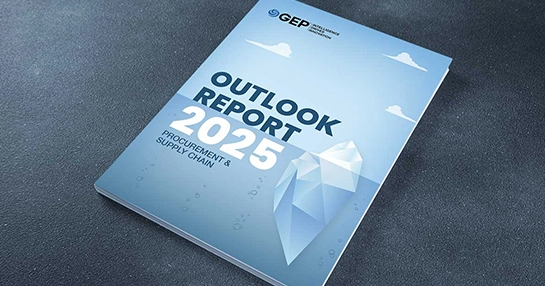
How AI and Automation Can Simplify Procurement Evaluation
- Procurement evaluation helps align procurement strategy with strategic business goals, including value addition through innovation, cost optimization and risk mitigation.
- AI-powered tools and unified source-to-pay platforms streamline decision-making, improve accuracy and foster collaboration across teams.
- These tools and platforms help overcome common pitfalls like overemphasis on cost and unclear evaluation criteria to ensure more strategic, fair and effective supplier selection.
February 17, 2025 | Procurement Strategy
How does your procurement team conduct evaluations? Does the team leverage technology in this process?
Procurement is no longer just about selecting suppliers—it’s a strategic function that drives business growth, mitigates risks, and fosters innovation. Yet many evaluation processes remain outdated, focusing narrowly on cost or compliance. To thrive in a competitive landscape, businesses need advanced techniques and smarter tools that deliver sustainable value.
This guide explores practical strategies and actionable insights to help you elevate your procurement evaluation process and stay ahead of industry challenges.
Why Procurement Evaluation Matters
For seasoned professionals, procurement evaluation is not just about selecting the right supplier or product; it’s about aligning procurement strategies with broader business goals. Here’s why it remains critical:
1. Enhancing Strategic Value
Procurement is no longer a back-office function—it’s a strategic enabler. Evaluation processes must align with organizational objectives like sustainability, innovation and cost optimization.
2. Mitigating Complex Risks
Global supply chains are more interconnected than ever, making risk assessment a critical part of procurement evaluation.
3. Leveraging Technology
The rise of AI-powered tools and analytics has transformed how evaluations are conducted, offering new opportunities for efficiency and accuracy.
4. Driving Innovation
By evaluating suppliers on factors like adaptability and technological capabilities, procurement teams can foster innovation across the supply chain.
Advanced Procurement Evaluation Techniques
• Total Cost of Ownership (TCO) Analysis
Experts understand that the lowest upfront cost doesn’t always translate to the best value. TCO analysis expands the scope of evaluation beyond the purchase price to include additional factors such as maintenance, logistics, downtime costs, and end-of-life disposal. To apply TCO, develop a comprehensive cost model that includes both direct and indirect costs over the entire lifecycle of the product or service. Use AI-powered tools to automate data collection and analysis and get more accurate TCO calculations.
• Supplier Segmentation and Prioritization
Not all suppliers are equally important, and experts must prioritize them based on their strategic value to the organization. The Kraljic Matrix framework categorizes suppliers into four quadrants—strategic, bottleneck, leverage, and non-critical—enabling tailored evaluation approaches. Go beyond the basics and include supplier innovation potential and ESG (Environmental, Social, Governance) compliance in the segmentation criteria to enhance decision-making.
• Risk-Based Evaluation Frameworks
Procurement risks, such as geopolitical instability or supply chain disruptions, require a proactive approach to evaluation. Key metrics for assessing risks include the financial stability of suppliers, geographic risk exposure, and cybersecurity measures for digital supply chains. AI-powered tools, such as predictive analytics, can forecast potential risks based on historical data and market trends, allowing for better-informed decisions and risk mitigation.
• Weighted Scoring Models with Custom Criteria
Experts often utilize weighted scoring models to assess suppliers, but these models can be enhanced by incorporating custom criteria that align with the organization’s broader goals. Examples of custom criteria include sustainability metrics like carbon footprint, technological capabilities such as digital transformation readiness, and the supplier's adaptability in volatile markets. It’s essential to regularly review and update these criteria to reflect evolving business priorities and maintain alignment with long-term strategic goals.
Leveraging Technology for Procurement Evaluation
• AI-Powered Procurement Tools
Artificial intelligence is transforming procurement evaluation by automating repetitive tasks and delivering actionable insights. Modern AI-driven platforms offer capabilities such as spend analytics, supplier performance tracking, contract management and predictive modeling. These tools enable faster decision-making through real-time data analysis, enhance accuracy in supplier assessments, and improve collaboration across teams by centralizing data management.
• Unified Source-to-Pay Platforms
End-to-end procurement platforms integrate various functionalities, including spend analysis, procure-to-pay processes, savings tracking, supplier management and contract management, into a single cloud-native system. These platforms streamline workflows for faster approvals, offer intuitive interfaces that increase adoption, and seamlessly integrate with ERP systems to enhance operational efficiency.
• Spend Analytics Solutions
Advanced spend analytics tools consolidate data from multiple sources, providing visibility into organizational spending patterns. They help procurement teams identify opportunities for cost savings while ensuring compliance with procurement policies. Capabilities include category-level insights to inform negotiation strategies, detection of maverick spending, and real-time dashboards that offer actionable insights.
• Supplier Collaboration Portals
Supplier collaboration portals improve communication between buyers and suppliers by providing a centralized platform for managing contracts, performance reviews, compliance documentation and dispute resolution. These portals foster improved supplier relationships through increased transparency, accelerate issue resolution through streamlined communication, and enhance compliance tracking across the supply base.
Common Pitfalls in Procurement Evaluation (and How to Avoid Them)
Even seasoned procurement professionals can encounter challenges during evaluation processes. Below are common pitfalls and actionable solutions to overcome them:
1. Overemphasis on Cost
Focusing too heavily on cost can lead to selecting suppliers who offer lower prices but fail to meet quality or long-term value expectations.
- Solution:
- Adopt a balanced scoring model where price constitutes, for instance, 20-30% of the total evaluation criteria, as recommended best practices suggest.
- Use Total Cost of Ownership (TCO) analysis to account for lifecycle costs such as maintenance, logistics, and end-of-life disposal.
- Educate stakeholders by modeling how excessive price weighting impacts outcomes, ensuring alignment with organizational priorities.
Also Read: Key Procurement Tools for Business Success
2. Unclear Evaluation Scales and Criteria
Ambiguity in scoring systems can lead to inconsistent evaluations and misaligned decisions.
- Solution:
- Implement detailed scoring scales (e.g., 5-10 points) with clear guidelines for evaluators.
- Provide training to evaluators on how to interpret and apply scoring criteria uniformly.
- Use digital tools that standardize scoring processes, ensuring consistency across evaluation teams.
3. Bias Toward Lower Bids
The “lower bid bias” occurs when evaluators disproportionately favor the cheapest option, often at the expense of quality.
- Solution:
- Use a two-stage evaluation process where qualitative factors are assessed first without revealing prices.
- Alternatively, separate evaluation teams for pricing and qualitative aspects to eliminate bias.
- Incorporate weighted scoring models that emphasize quality metrics alongside cost considerations.
4. Lack of Consensus in Decision-Making
Discrepancies in evaluator scores can result in decisions that do not accurately reflect the best supplier choice.
- Solution:
- Conduct consensus meetings to address significant score variances. Facilitators should focus discussions on areas of disagreement while ensuring evaluators have completed their comments and scores beforehand.
- Use moderation techniques where an independent reviewer challenges scores for consistency and accuracy.
- Leverage collaborative procurement platforms that centralize evaluator inputs and streamline decision-making processes.
5. Inadequate Risk Assessment
Failure to assess risks such as supplier financial instability or geopolitical disruptions can result in costly project delays or failures.
- Solution:
- Integrate predictive analytics tools into the evaluation process to identify potential risks based on historical data and market trends.
- Develop a risk matrix that evaluates suppliers on factors like financial health, geographic exposure and cybersecurity readiness.
- Include contingency planning as part of the procurement strategy to mitigate identified risks effectively.
6. Misinterpretation of Tender Requirements
Misunderstanding tender specifications can lead to non-compliance or submission of uncompetitive bids.
- Solution:
- Ensure evaluators thoroughly review tender documents multiple times, involving technical experts when necessary.
- Create checklists for compliance with administrative and technical requirements.
- Use automated document management tools to flag missing elements or inconsistencies in bids.
7. Rushing Through Evaluations
Hasty evaluations increase the likelihood of errors, such as overlooking critical details or miscalculating scores.
- Solution:
- Allocate sufficient time for evaluations and avoid setting unrealistic deadlines.
- Employ automated scoring systems that reduce manual errors while maintaining transparency.
- Conduct pre-award moderation sessions to validate scores before releasing results.
By addressing these pitfalls with structured frameworks, advanced tools and collaborative approaches, organizations can enhance their procurement evaluations' effectiveness, fairness and alignment with strategic goals.
Conclusion
For procurement experts, mastering advanced evaluation techniques is essential for driving strategic value in today’s dynamic business environment. By leveraging frameworks like TCO analysis, risk-based evaluation, AI-powered tools, unified platforms for source-to-pay processes and advanced spend analytics solutions, you can elevate your procurement strategies and deliver measurable results.
Procurement isn’t just about buying—it’s about building resilient supply chains that support innovation, sustainability and long-term growth. As a procurement professional, your ability to refine your evaluation processes can set you apart as a leader in driving organizational success.



